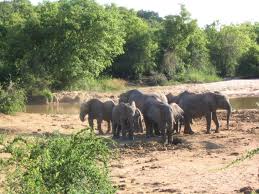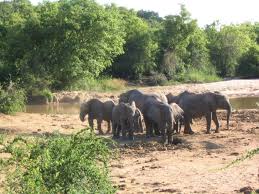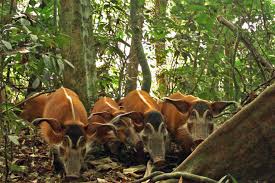Wildlife management can be simply defined as the application of ecological knowledge to populations of animals (both vertebrates and invertebrates) and their environments in a way that balances the needs of these populations with those of humans. Essentially, wildlife management is applied ecology, advancing as ecological knowledge expands and is integrated by wildlife ecologists.
Understanding Ecology
Ecology, derived from the Greek words “oikos” (home) and “logos” (study of), was first coined by Ernst Haeckel in 1869. It is the study of organisms in their natural environments, examining the relationships between organisms and their surroundings.
With increased ecological knowledge, wildlife management becomes more effective. There are three basic approaches to the application of this knowledge:
1. Preservation: Allowing nature to take its course without human intervention.
2. Direct Manipulation: Adjusting animal populations through practices like cropping or culling, such as relocating species from overpopulated areas.
3. Indirect Manipulation: Altering habitats or improving vegetation to influence animal populations.
Read Also: Goat Milk Production Complete Guide
Wildlife Management vs. Wildlife Conservation

Wildlife management is sometimes better termed wildlife conservation, as leaving landscapes intact may often be the best conservation strategy, even if it involves minimal direct management.
Conservation is defined as the sustainable use of natural resources, aiming to provide the greatest benefit to the largest number of people for the longest possible time. It ensures a balance between human needs and the needs of other species, although human bias naturally influences decisions due to our survival instincts.
Importance of Wildlife
Wildlife represents a crucial natural resource, though its full value is often underappreciated in Nigeria due to issues such as lack of awareness, inadequate funding, and illegal activities. Below are some key benefits of wildlife:
1. Protein Source: Wildlife provides a significant portion of animal protein, especially in rural Africa. Bush meat helps bridge the gap between livestock production and population growth. People also engage in snail farming, bee production, and grasscutter rearing as a source of income and to combat poverty.
2. Education and Research: Wildlife offers critical opportunities for studying natural habitats, and contributes to medical research. For instance, primates are used in laboratories for research, including the study of the Rhesus factor, essential in blood transfusions.
3. Sale of Live Animals and Wildlife Products: Live animals such as monkeys and birds are exported, and products like reptile skins and ivory were once valuable export items. Managing animal populations properly could help restore the value of these products.
4. Tourism and Foreign Exchange: Wildlife conservation areas attract tourists. Developing tourism can generate significant income for Nigeria, as seen in countries like Kenya and Tanzania.
5. Conservation for Posterity: Conserving wildlife preserves genetic resources for future generations, maintaining a vital part of the nation’s cultural heritage.
Wildlife and Traditional Medicine

Wildlife plays an important role in traditional medicine, with parts of wild animals and plants being used to treat various ailments in both children and adults.
Philosophy of Wildlife Management
The role of the wildlife manager is to ensure the highest possible production of wildlife within landscapes that serve multiple purposes, such as timber production, grazing, and farming. The challenge is to balance these uses without harming wildlife populations.
Objectives of Wildlife Conservation in Nigeria
The main objectives of wildlife conservation in Nigeria include:
- Increasing bush-meat production to boost animal protein availability.
- Promoting tourism and foreign exchange earnings through game viewing, photographic safaris, and sport hunting.
- Preservation of national heritage and wildlife for education and research.
- Generating employment opportunities in rural areas.
- Maintaining ecological diversity by preserving the gene pool.
While these objectives are commendable, implementation has been hindered by inadequate funding, lack of manpower, ignorance, and poor awareness among policy makers.
Problems Facing Wildlife Management in Nigeria
The abundance and diversity of wildlife in Nigeria are declining due to several challenges:
1. Poaching: Illegal hunting reduces game populations and makes animals wary of humans, negatively affecting tourism and wildlife populations.
2. Bush Burning: Fires set by poachers and farmers destroy habitats, further threatening wildlife.
3. Habitat Destruction: The loss of vegetation crucial for wildlife survival leads to population declines, especially when protected areas are reduced for other uses.
4. Illegal Grazing: Fulani herdsmen often graze livestock in protected areas, competing with wild animals for food and damaging habitats.
5. Illegal Settlement: Unauthorized settlements in protected areas lead to poaching and other illegal activities.
6. Lack of Trained Personnel: Few people in Nigeria pursue wildlife management as a career, leading to a shortage of trained professionals.
7. Inadequate Financing: Limited funds hinder wildlife conservation efforts, from purchasing equipment to maintaining tourist facilities.
8. Low Public Awareness: The public’s understanding of wildlife conservation benefits is limited, reducing support for conservation efforts.
9. Public Apathy: Even when aware, citizens rarely advocate for wildlife conservation, further complicating protection efforts.
10. Political Instability: Frequent changes in government disrupt policies and conservation programs, delaying progress.
Read Also: Worm Infestation on Ruminant Animals: Symptoms and Treatmen
Categories and Management Objectives of Protected Areas

Different categories of protected areas serve specific management objectives:
1. Scientific Reserves/Strict Nature Reserves: Protect nature in an undisturbed state for scientific study and education.
2. National Parks: Protect large areas of national significance for scientific, recreational, and educational use.
3. Natural Monuments: Preserve significant natural features for their unique characteristics.
4. Wildlife Sanctuaries: Ensure the survival of significant species or biotic communities.
5. Protected Landscapes: Maintain natural landscapes that reflect the interaction between humans and nature.
6. Resource Reserves: Protect natural resources from development for future use.
7. Anthropological Reserves: Allow traditional societies to continue living in harmony with the environment.
8. Multiple-Use Areas: Sustain the production of resources like water, timber, and wildlife while conserving nature.
9. Biosphere Reserves: Preserve biotic communities and genetic diversity for future use.
10. World Heritage Sites: Protect natural features of global importance for public education.
Do you have any questions, suggestions, or contributions? If so, please feel free to use the comment box below to share your thoughts. We also encourage you to kindly share this information with others who might benefit from it. Since we can’t reach everyone at once, we truly appreciate your help in spreading the word. Thank you so much for your support and for sharing!
